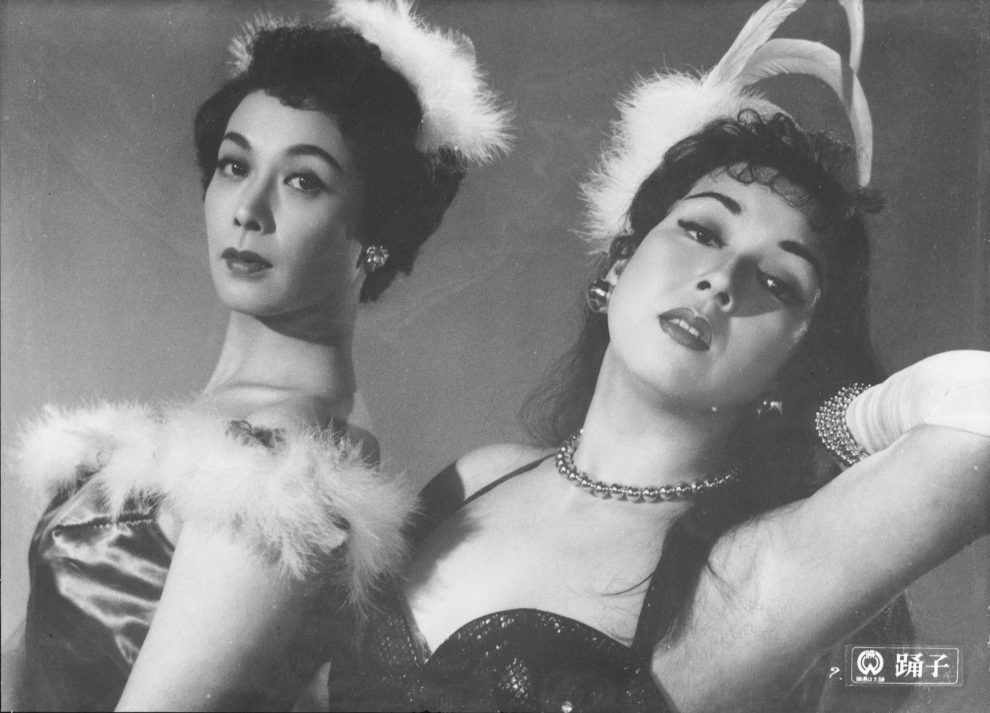Known for his gentle and humorous approaches on serious topics during postwar Japan, in the 1957 film “Dancing Girl” we see director Hiroshi Shimizu create a more stern portrait on rejection of traditional morality. The plot follows dancer Hanae (Chikage Awashima) who is happily married to musician Yamano (Eiji Funakoshi) until her sister Chiyomi (Machiko Kyô), shows up at her house one day and begins to live with the couple. Chiyomi also becomes employed as a dancer and begins to cause trouble for the family.
There’s implications of criticism of traditional Japanese values in the aftermath of the war. Chiyomi’s rebellion through her job as a dancer and her unconventional relationship with her sister’s husband Yamano suggests a rejection of the old order. Her promiscuity is seen as a way to reclaim agency and express herself in a society that might have suppressed such desires before. She can also be thought of as a metaphor for the loss of innocence that Japan experienced after the war. In “Dancing Girl” there is a significant shift in Shimizu’s usual style where he begins to experiment with a more provocative approach, perhaps to better portray Chiyomi’s defiance. The cost of her newfound freedom leads to Chiyomi indulging in her own desires and ends up sacrificing traditional values and risking social acceptance.
More risqué than Shimizu’s previous films, here he explores themes of desire and sexuality while avoiding explicit scenes, relying only on suggestion and atmosphere to create a sense of simmering sexuality. Cinematographer Tomohiro Akino captures Chiyomi’s allure subtly through his direction. On screen she is always kept in focus and conveys a magnetism that other characters (and perhaps the audience as well) would perceive. The portrayal of sexuality is somehow presented in a way anyone can appreciate, regardless of age. This could be due to the focus on tension between the characters and desire rather than graphic depictions. As always, the lovely Machiko Kyo’s acting for the role is top-notch, especially when using her dancing to convey sensuality. This adds another layer to Chiyomi’s character, making her a captivating and complex figure to the audience.
Up until now, “Dancing Girl” has been one of Shimizu’s harder to access films, but is definitely worth watching. To see more of Hiroshi Shimizu’s postwar films including “Dancing Girl” in theaters, the Japan Society is holding a retrospective this month. Tickets can be purchased here.


















